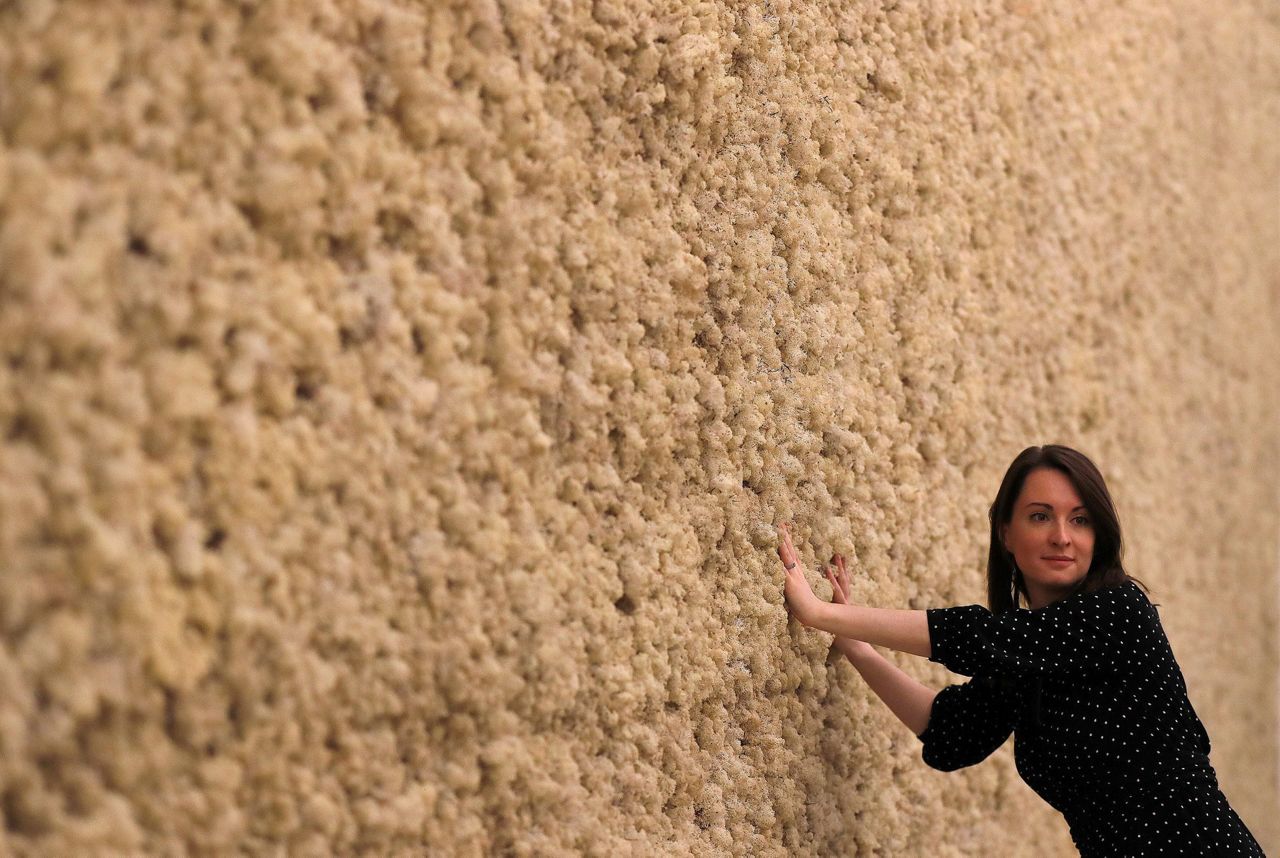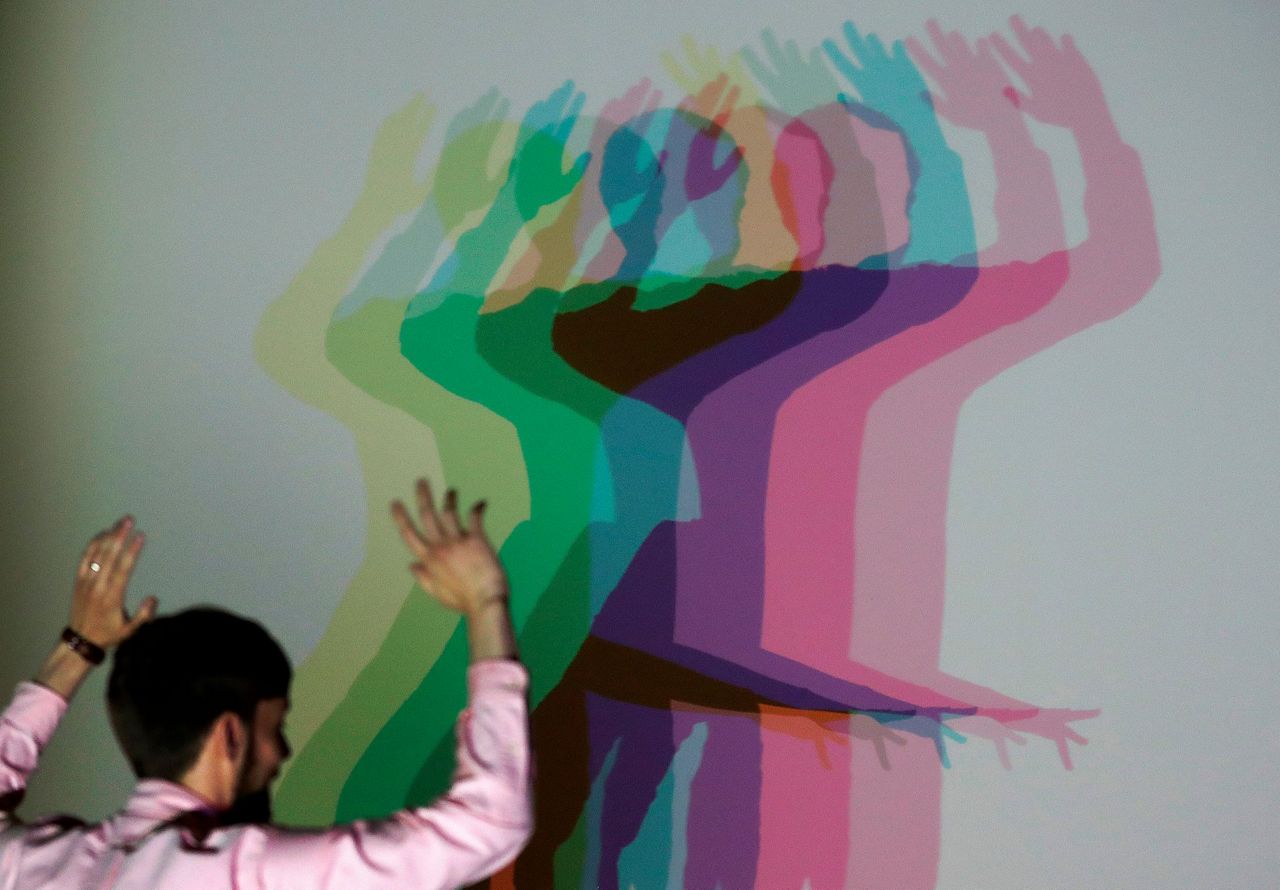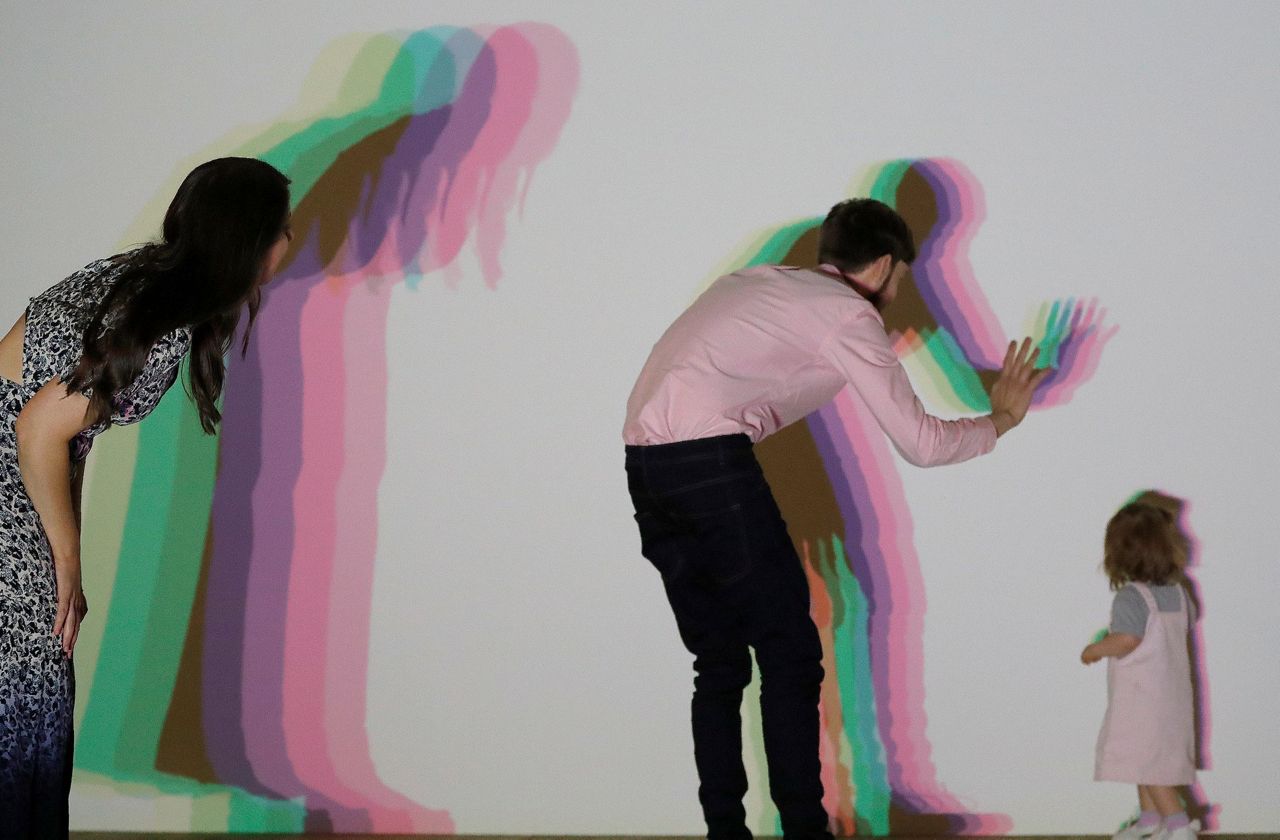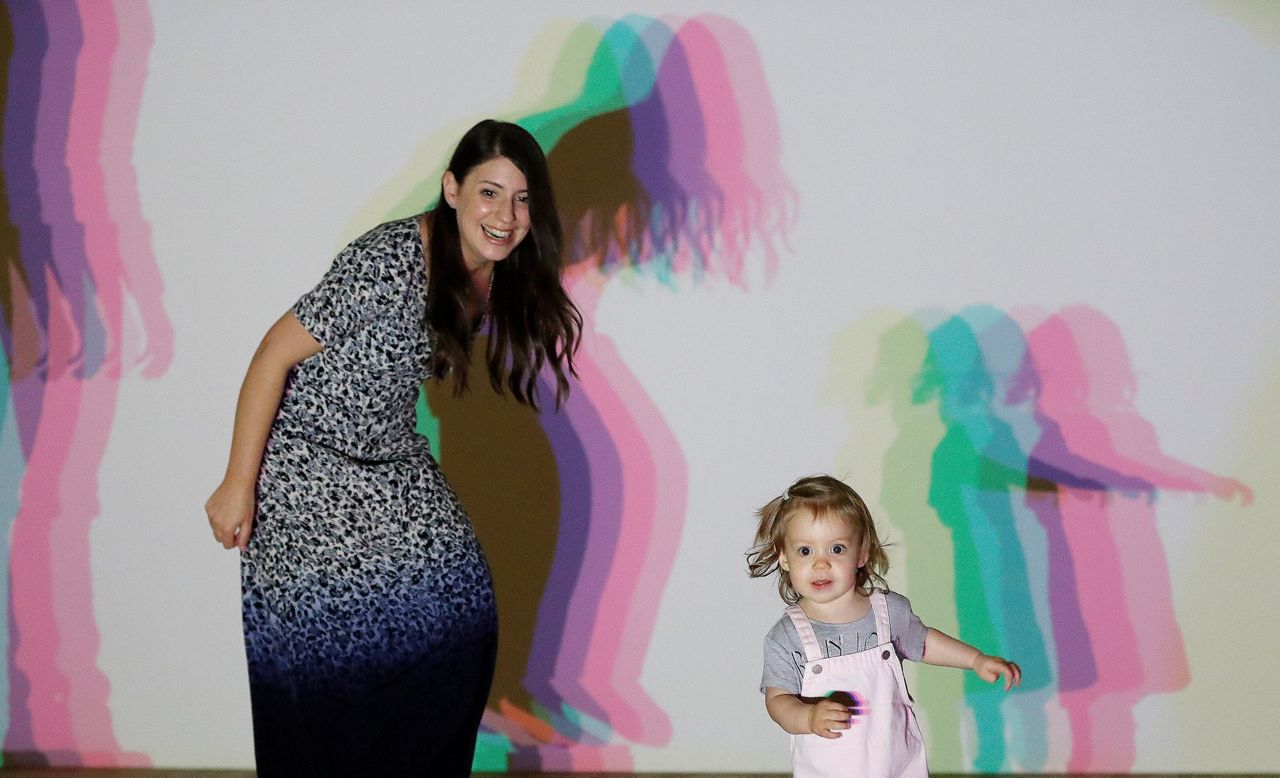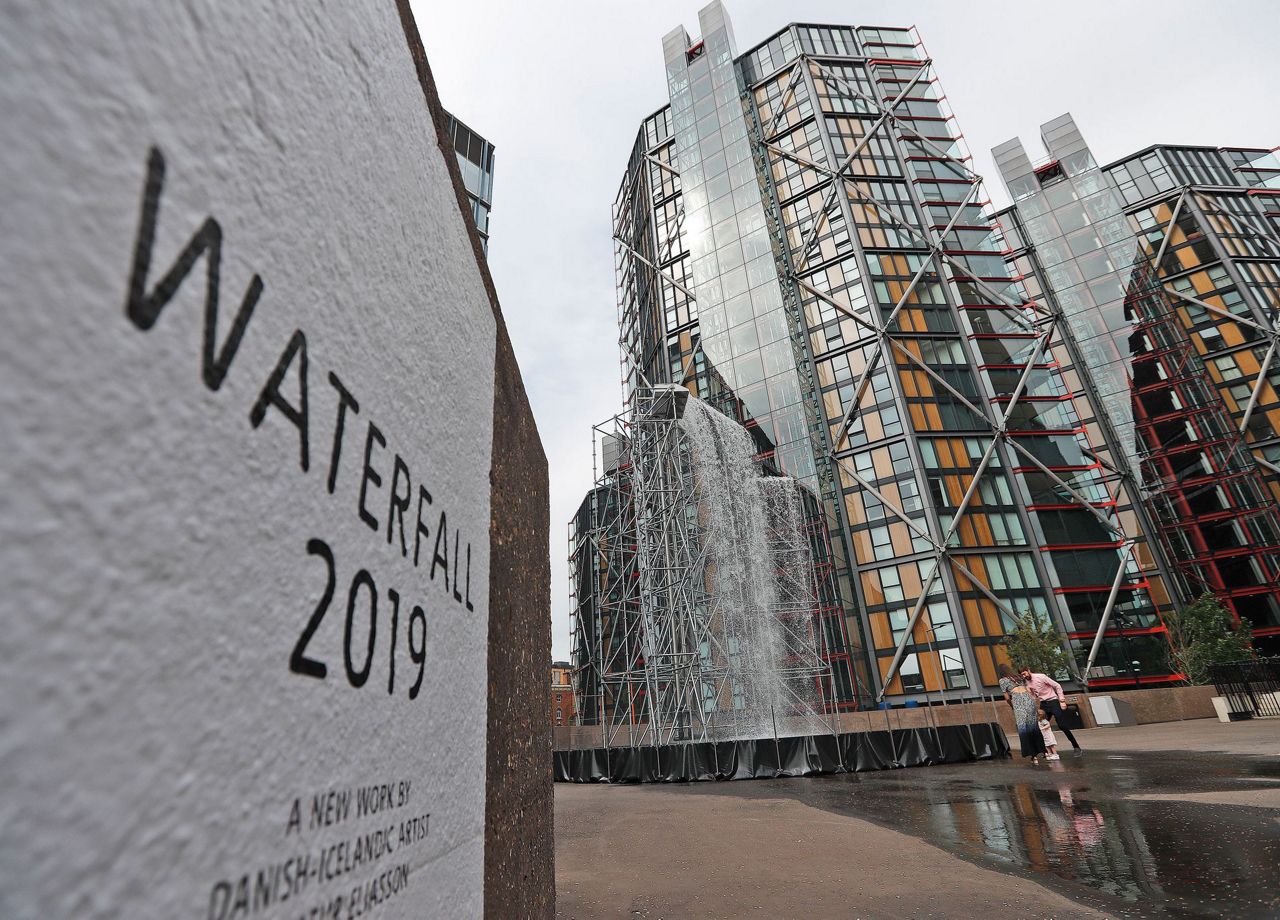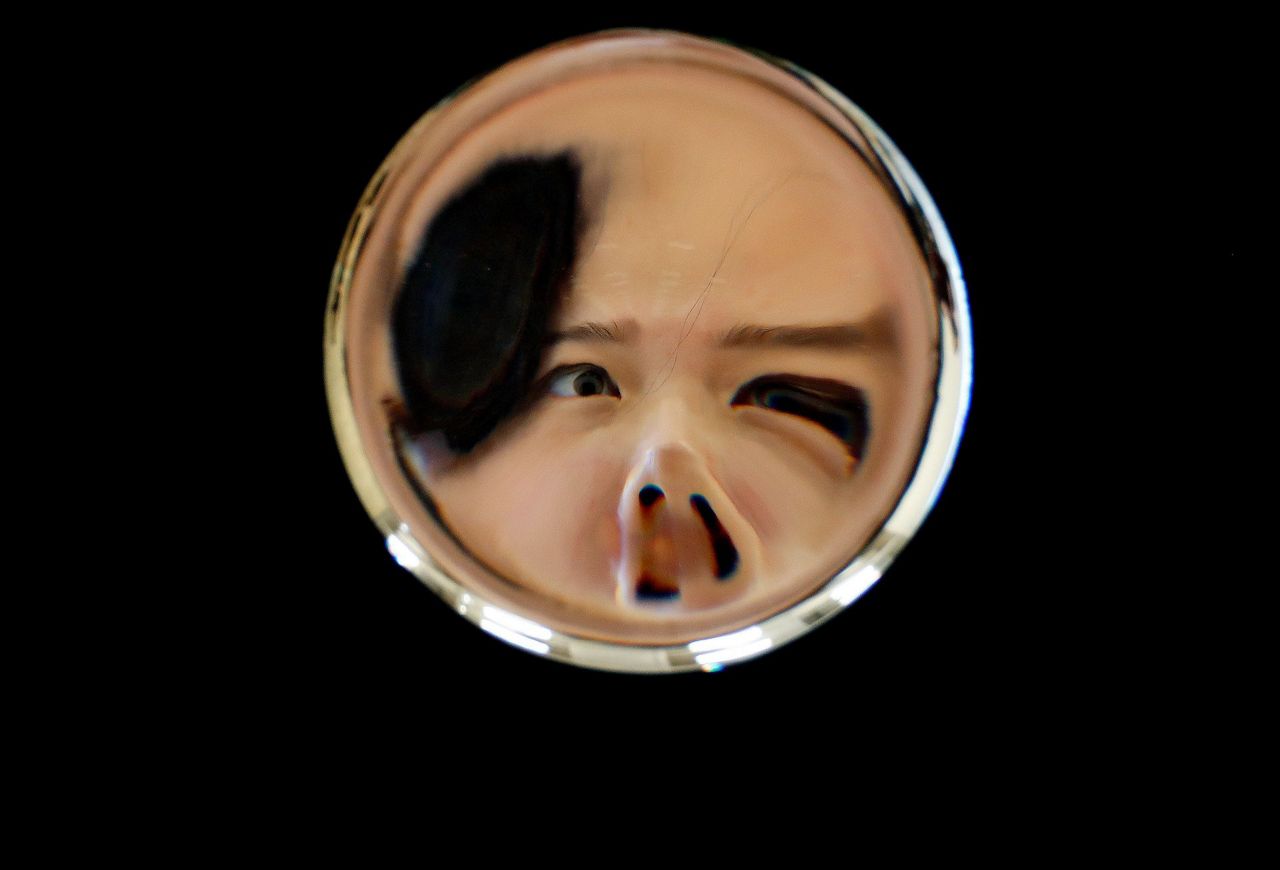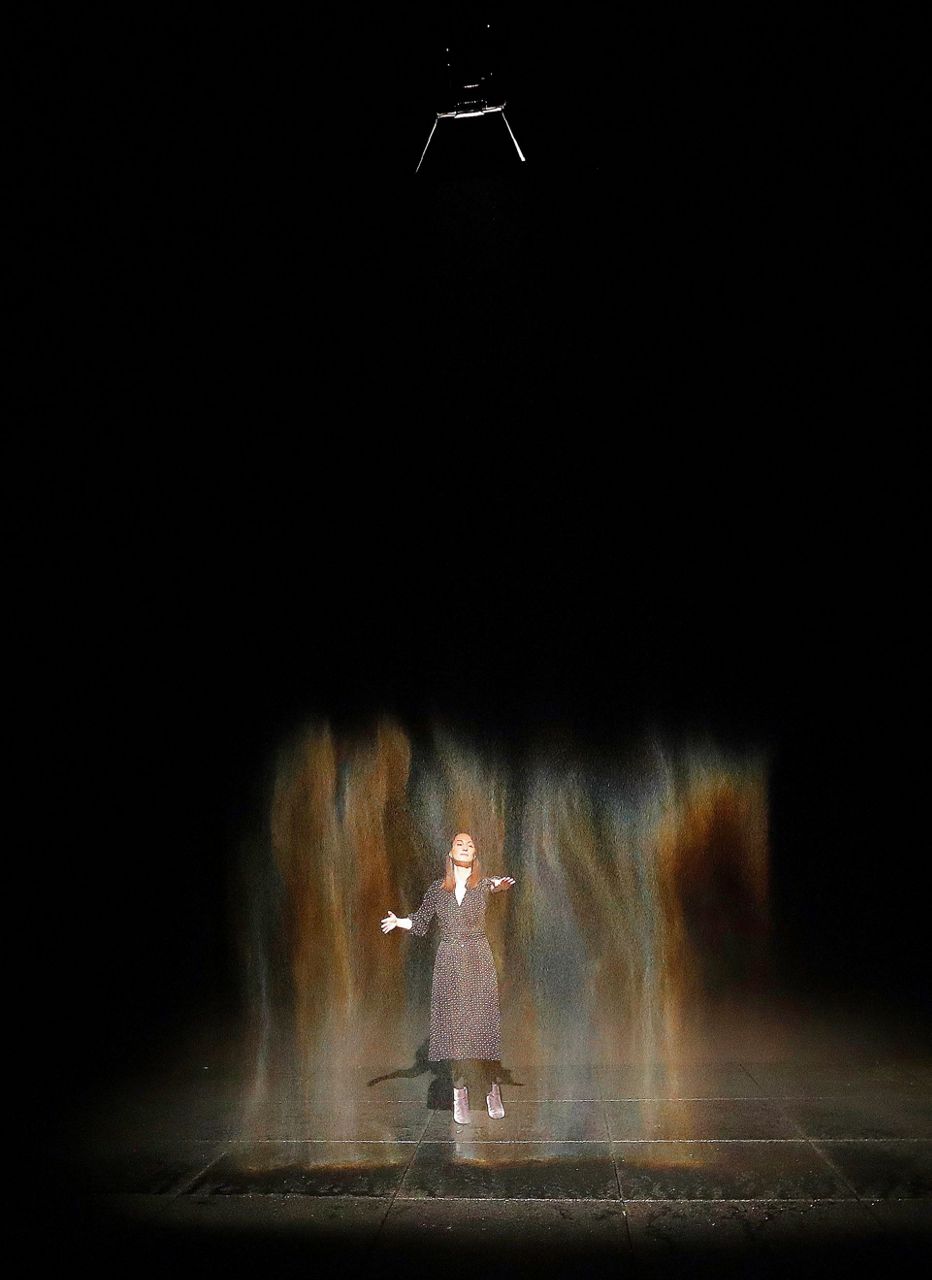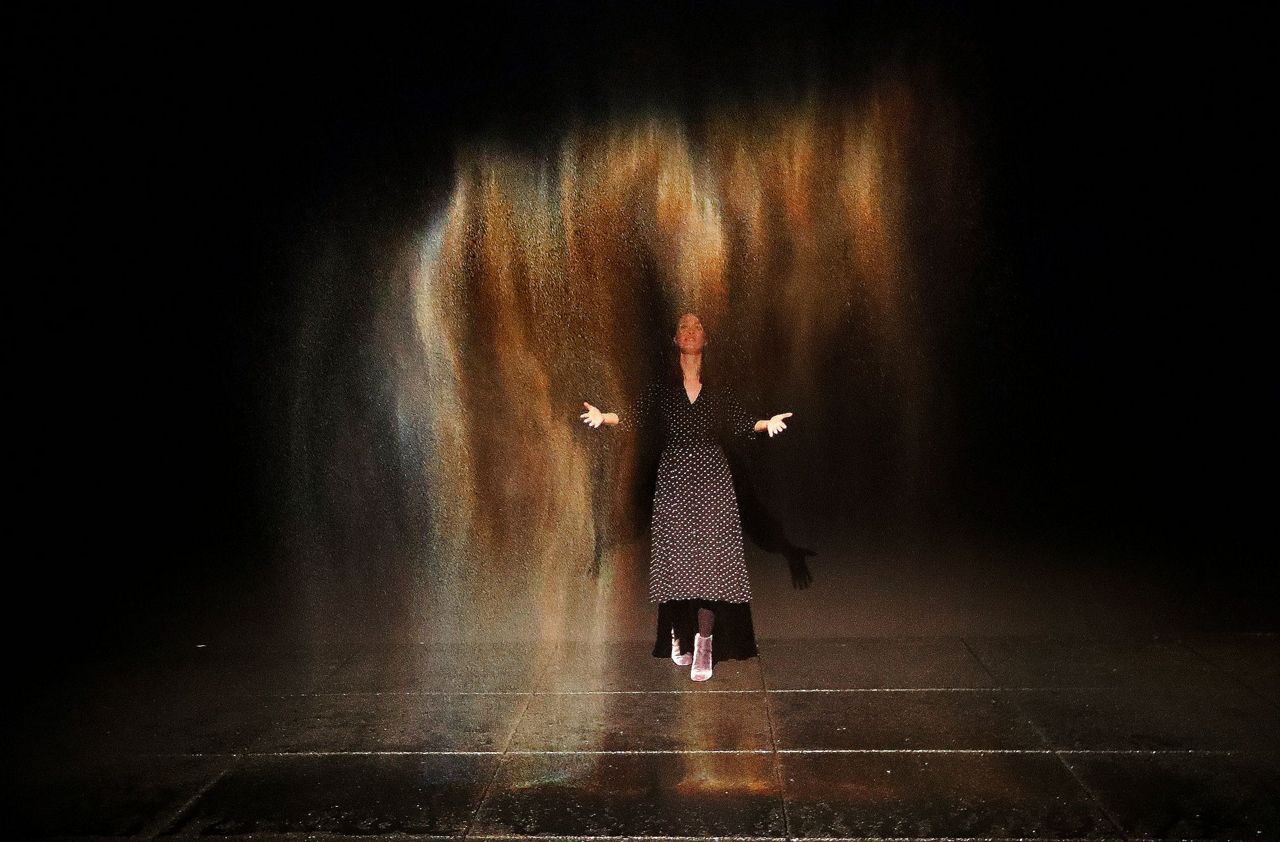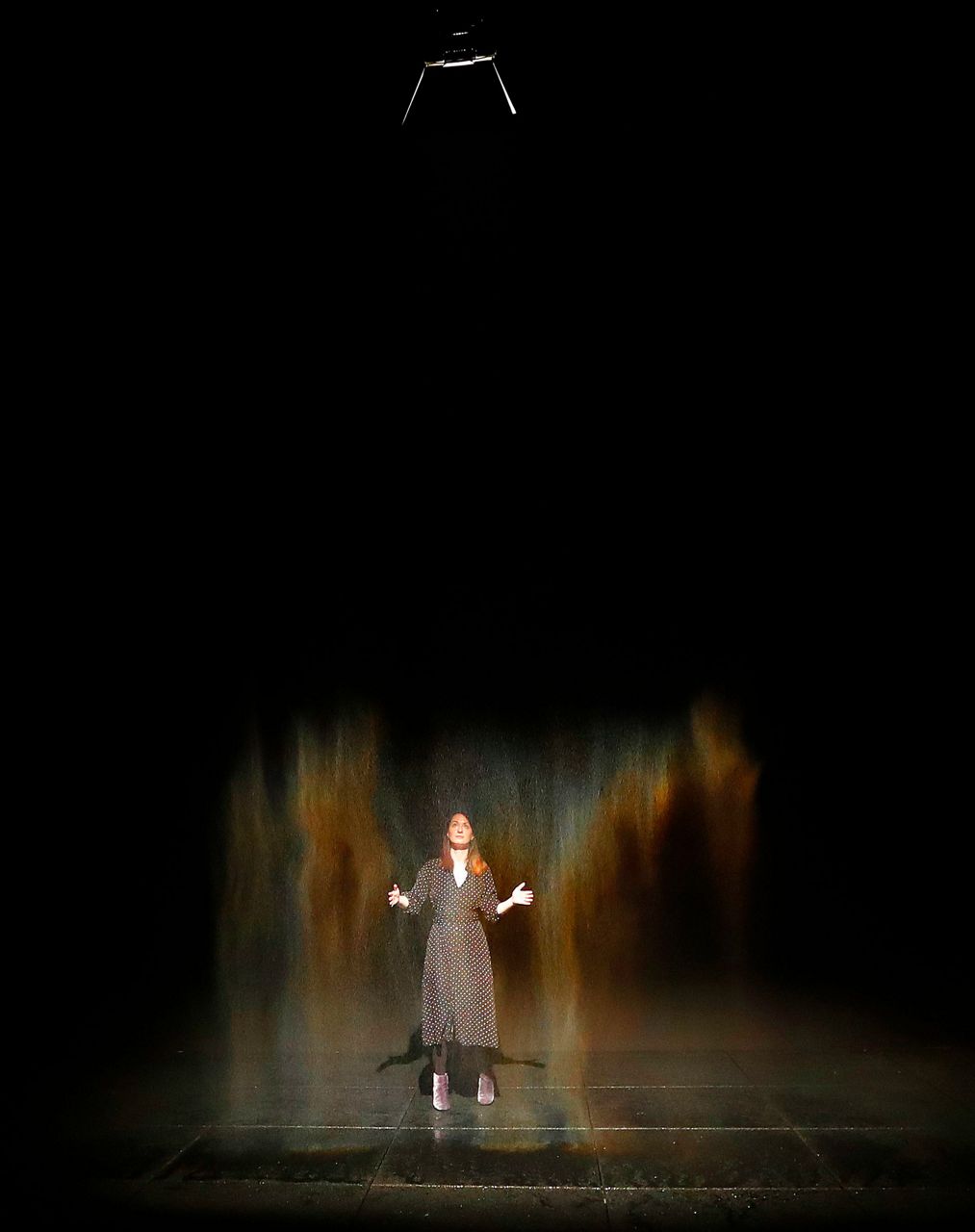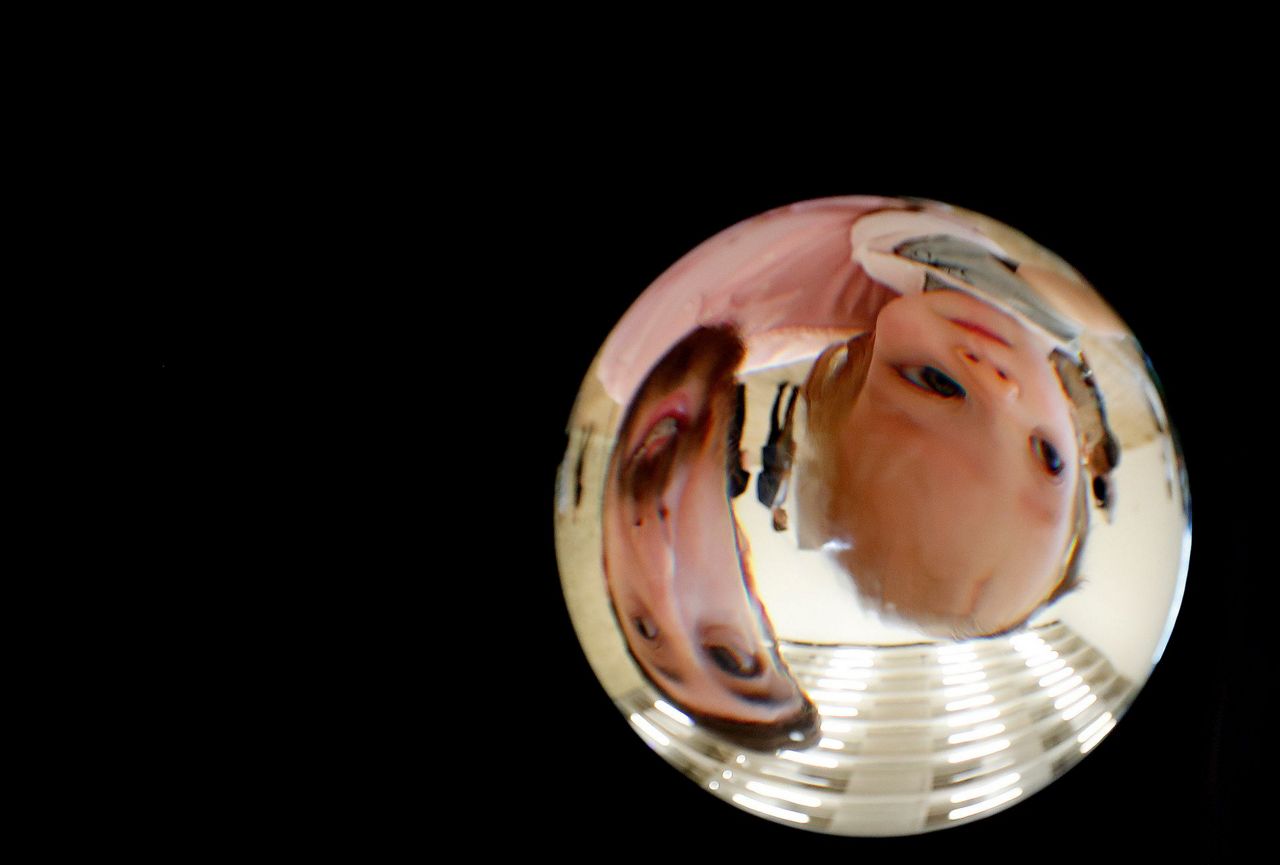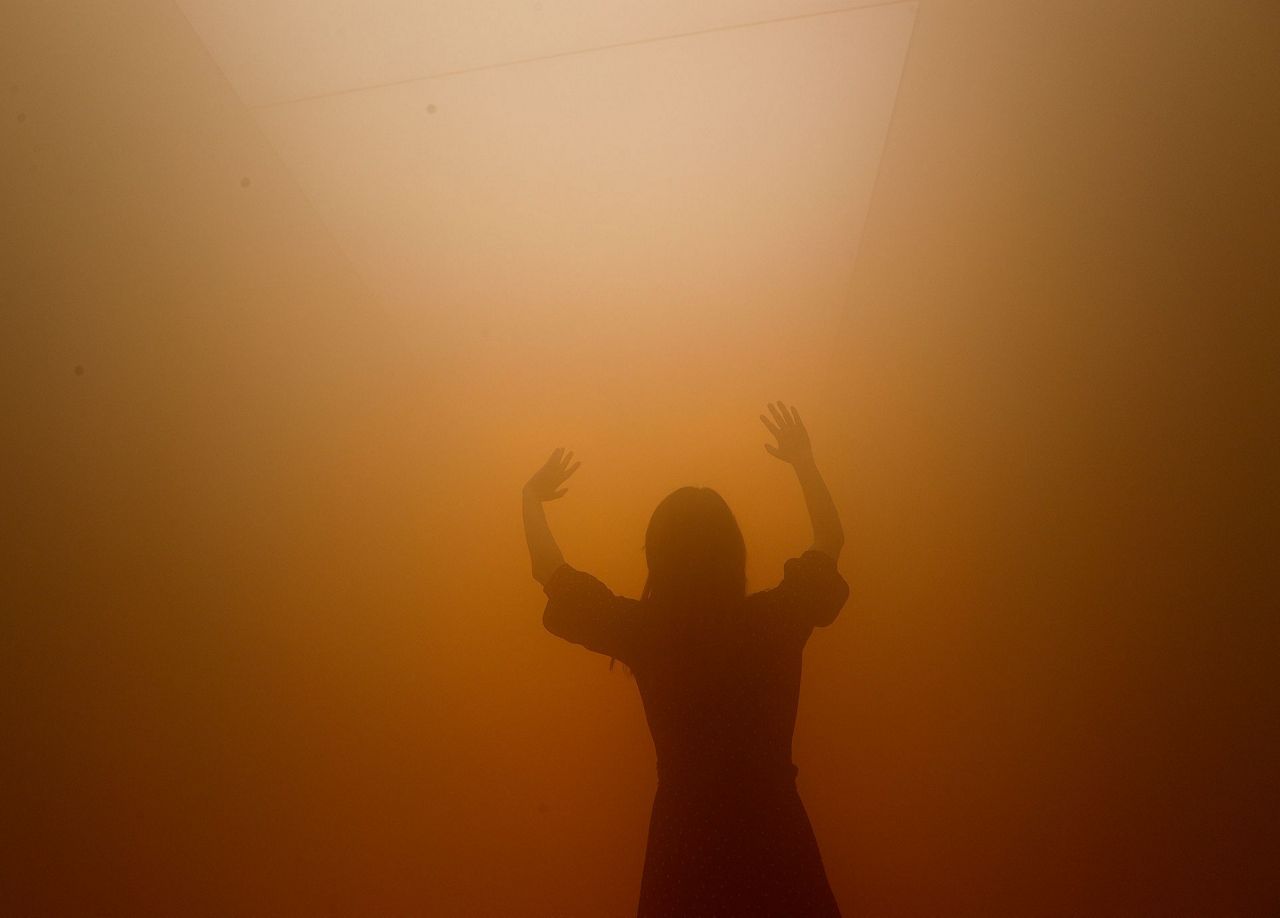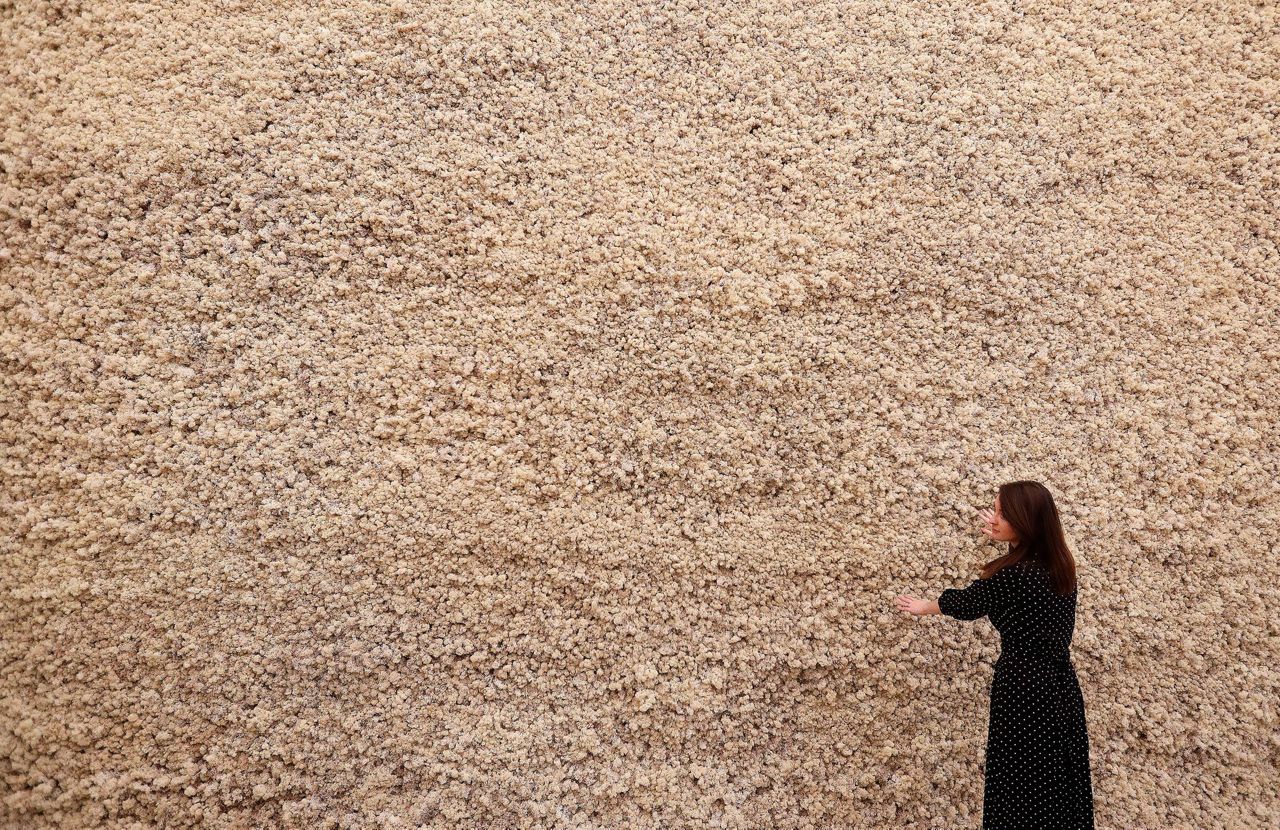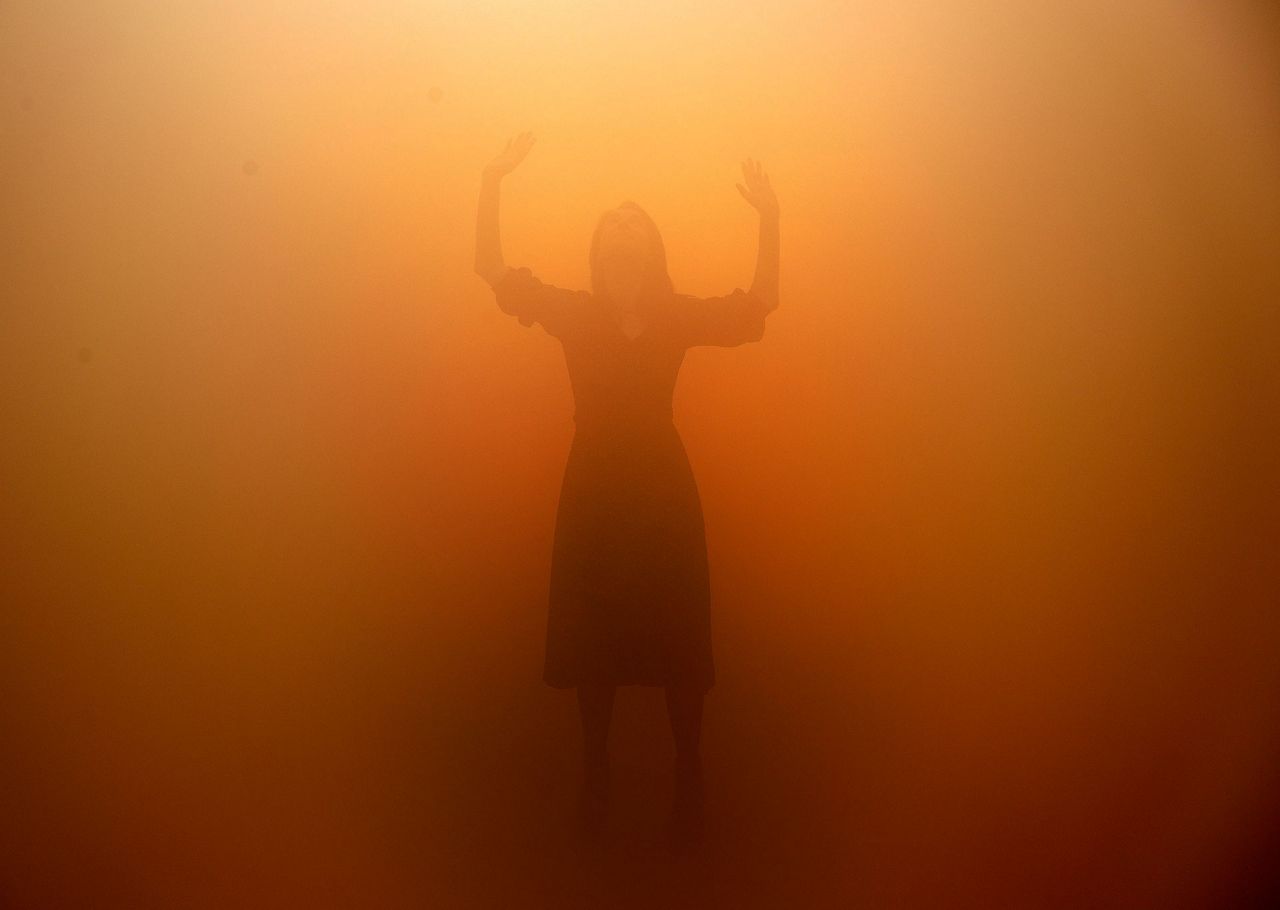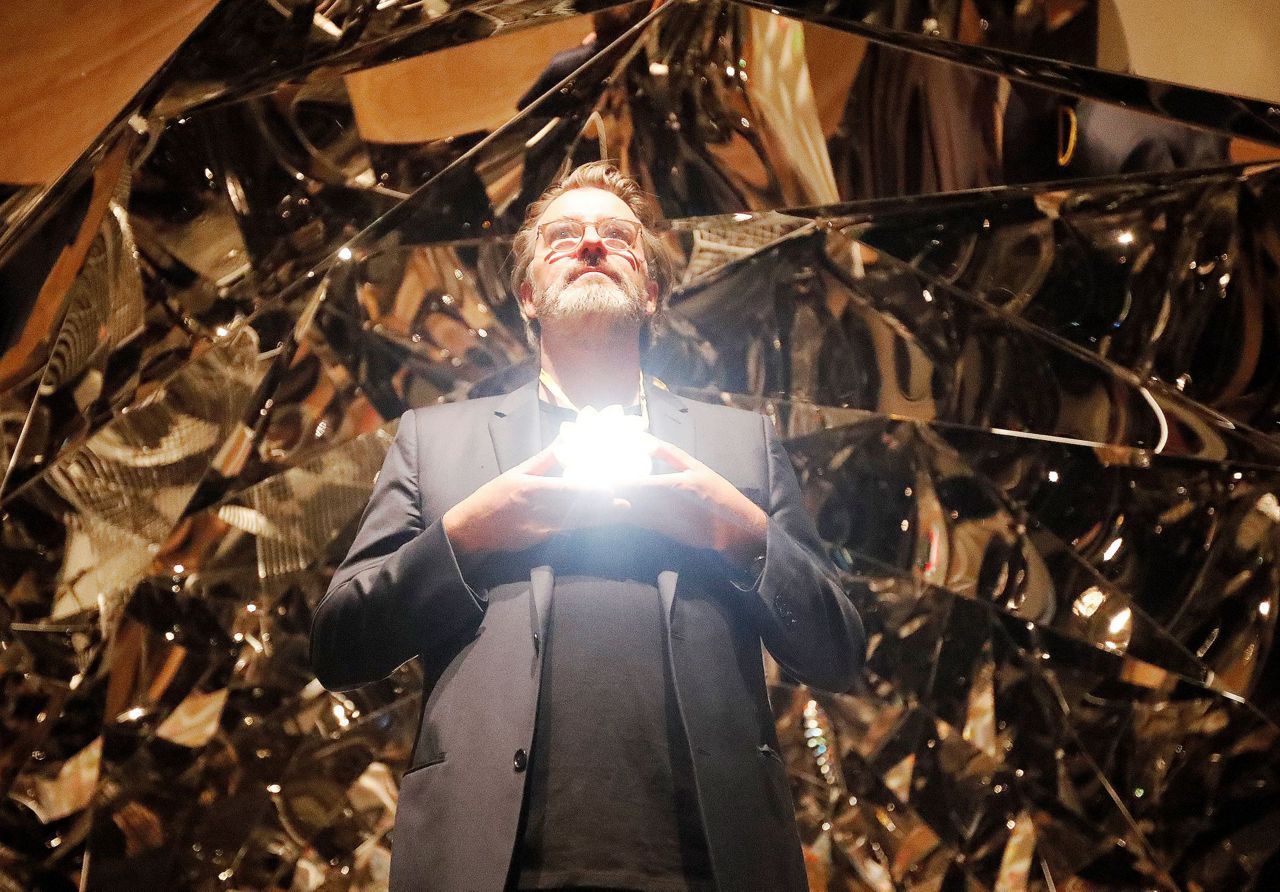LONDON (AP) — Visitors don't just view the new London exhibition devoted to Danish-Icelandic artist Olafur Eliasson. They also feel, smell and taste it.
Eliasson creates large-scale works that draw on the elements and nature: wood, fire, light, water. More than 40 of his pieces feature in a huge retrospective opening this week at London's Tate Modern .
Visitors can get splashed by a 36-foot (11-meter) waterfall, touch a moss-covered wall, feel a misty rainbow, cast colorful shadows, walk through a mirrored kaleidoscope and inch blindly down a tunnel filled with multicolored fog. Starting later this month, visitors can help construct a giant city out of Lego in Tate's vast Turbine Hall.
For Eliasson, art is interactive. He wants visitors to "get a sense that the show is really there because (they) looked at it, and not the other way around."
"When you look at that rainbow, is it in fact you consuming the colors, or is it you producing the colors?" he said Tuesday.
The 52-year-old artist has always loved the challenge of using unexpected and intangible materials in his art.
"How do I touch what is normally considered untouchable, like the air? How do I take something that I don't understand — data, glaciers — and make it tangible?"
Eliasson's fascination with nature gives his work a powerful ecological message that has grown more urgent with time.
In the past, he has tried to make climate change visceral by bringing chunks of Greenland glacier to melt in public spaces in streets of London, Paris and Copenhagen. The Tate show includes a series of photos of Icelandic glaciers taken in 1999. Eliasson plans to go back this summer and photograph them again, and the two sets will be hung side by side to illustrate how human-driven climate change is altering the landscape.
"When I was a child, I spent a lot of time in Iceland, in nature, and I thought culture is over here — humankind, human activities — and nature is out there. It's a wilderness, it's something untouched," Eliasson told The Associated Press.
Now he says he realizes "there is nothing that has not been touched" by human activity.
"Not even the atmosphere, not even the air that we breathe, is just to be taken for granted as something natural. It's a cultural product. It's a product of our society."
Climate change has also become a focus for Britain's Tate, a group of galleries which — like other major art institutions — has been targeted by protesters for taking funding from oil companies and other corporations accused of doing social harm.
Tate is now making efforts to go green, and has held meetings gathering together artists and environmental activists. All the works on display in the Eliasson exhibition were transported to London by sea and land — no airplanes were used.
"We're all learning, and we (in the art world) have to learn very quickly," said Emma Lewis, one of the exhibition's curators.
In Eliasson's view, there is a natural overlap between art and activism. The Tate exhibition ends with a room showcasing work he has done that goes beyond art into architecture, design — he co-designed a solar lamp that has been distributed in its thousands— and even food. One of the Tate cafes is serving organic, vegetarian food modelled on that served to staff in Eliasson's Berlin studio.
The exhibition, which opens Thursday and runs to Jan. 5, is titled "Olafur Eliasson: In Real Life." As the artist sees it, art and life are one and the same.
"When you step into a museum you don't step out of the real world," he said. "It's like seeing reality in higher definition."
___
Follow Jill Lawless on Twitter at http://Twitter.com/JillLawless
Copyright 2019 The Associated Press. All rights reserved. This material may not be published, broadcast, rewritten or redistributed.




